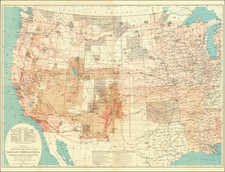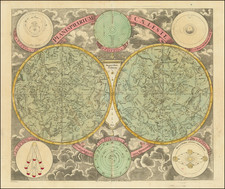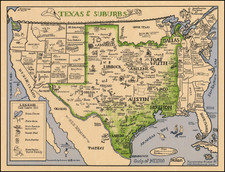Panoramic Photograph of WWI Army Training Camp near San Antonio
Noted for African American Soldiers
An expansive panoramic photograph view of Camp Travis, a World War I era Army training camp remembered today for housing a diverse group of troops including African Americans, Native Americans and Latinos, as well as Whites. While Latinos and Native Americans were intermixed with the White soldiers, the African American soldiers at Camp Travis were segregated, being assigned to the camp depot brigade. The photograph shows the extensive barracks (dozens of structures), headquarters with flagpole, camp area (tents), grounds, equipment, vehicles (mostly automobiles and motorcycles with sidecars), as well as a few uniformed troops milling about. The large home of Col. Breckenridge can be seen in the upper right corner background.
Camp Travis was named to honor Lt. Col. William B. Travis, hero of the Republic of Texas who died in 1836 while defending the Alamo.
In July 1918 Camp Travis was serving as an induction and replacement center for troops during the war, with an average strength of 34,000 White and African American troops (see the Handbook of Texas). By December 1918 Camp Travis was designated a demobilization center.
The following features are visible in the image, and several of the wooden barracks are specifically identified in the negative:
School of Gas Defense
Division Headquarters
Col. Breckenridge House
Remount Station
Western Union
Identified barracks (captioned in the negative):
Co. E. 35th Infantry
25th Co. D.B. (African American soldiers assigned to Depot Brigade)
27th Co. D.B.
Co. A. 35th Inf.
Co. B. 35th Inf.
Charles Albert Stead (1870–1932), a successful commercial photographer in San Antonio, was styled by some as the “unofficial photographer of America’s military.”
A fine detailed panoramic view photograph of a large WWI Army training camp near San Antonio, showing the layout of segregated African American troop barracks.
The Ninetieth Division was organized at Camp Travis in September and October of 1917. The ranking officers, including Maj. Gen Henry T. Allen, the division and camp commander, were regular army officers. The junior officers were primarily Texas and Oklahoma graduates of the officer-training camp at Camp Funston. The enlisted personnel consisted of Texas and Oklahoma draftees. Hispanics and Indians were intermixed with Caucasians in the new draft division, but Blacks were assigned to the camp depot brigade. By mid-October 1917 the Ninetieth Division numbered more than 31,000 officers and men. Equipment shortages, illness, and transfers to other commands interfered with training, however. At the time the division departed for Europe in June 1918 it was composed in considerable part of recent conscripts, many from states other than Texas and Oklahoma. During General Allen's absence in the late fall and winter of 1917–18 the division and camp were commanded successively by brigadier generals Joseph A. Gaston and William H. Johnston.
During the summer of 1918 Camp Travis served as an induction and replacement center, with an average strength in July of about 34,000 White and Black troops. In August and September the Eighteenth Division was formed of old and new units at the post under the command of Brig. Gen. George H. Estes. The Eighteenth was still in training when the war ended on November 11. On December 3 Camp Travis was named as a demobilization center. The facility was also designated a local recruiting station and a regional recruit depot in March 1919. Some 62,500 troops were discharged at Camp Travis in about eight months. The camp then became the home station of the Second Division. Its service as a separate entity was terminated, however, upon its absorption by Fort Sam Houston in 1922.











![Pour Les Vents [world map centered on Asia]](https://storage.googleapis.com/raremaps/img/small/59768.jpg)
![[Olivier van Noort Portrait / World Map]](https://storage.googleapis.com/raremaps/img/small/79567.jpg)



